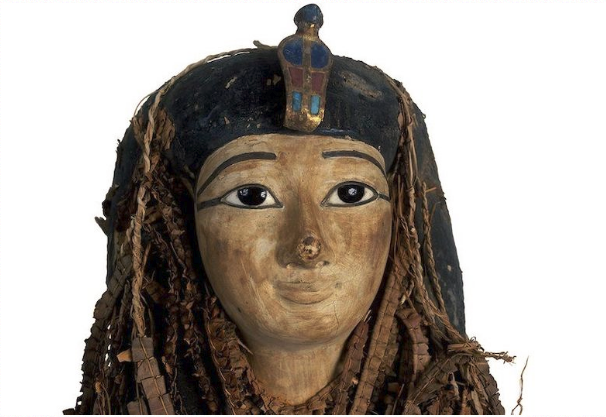Egyptian Pharaoh’s Mummy Digitally Displayed After 3,500 Years
Radiologist Sahar Saleem says Amenhotep is physically similar to his father, with a narrow chin, small nose and curly hair. Surprisingly for someone who lived about 3,500 years ago, they had remarkably good teeth.
Saleem speaks of the mummified body of the warrior king pharaoh Amenhotep I, which is a kind of enigma, as it is one of the few royal mummies whose unwrapping remains intact in modern times. Saleem, a professor of radiology at Cairo University’s medical school, is part of a team that successfully opened Amenhotep I digitally rather than physically.
The results obtained using 3D computed tomography (CT) scanning technology are unique and fascinating. The findings detail the pharaoh’s appearance and the generosity of the jewels he was buried with.
“We showed that Amenhotep was about 35 years old when he died. He was about 169 cm tall, circumcised, and had beautiful teeth. She wore a unique gold sash with 30 talismans and gold beads in her wraps.” says.
“Amenhotep physically resembled his father… He had a narrow chin, a small narrow nose, curly hair and slightly protruding upper teeth.”

Saleem says the very good teeth of Amenhotep are proof of how “wonderful” the mummification process was. “The mummified corpse was well preserved. Even the tiny bones inside the ears were preserved. There is no doubt that Amenhotep’s teeth were well preserved. Many royal mummies had bad teeth, but Amenhotep’s teeth were fine.”
Amenhotep was the second king of the 18th dynasty and his father
He ascended the throne after Ahmose’s death. He ruled Egypt for about 21 years between 1525 and 1504 BC.
His name means “Amun is pleased”. His throne was named Djeserkare – “The Spirit of the Holy Re” – and it seems that he had a peaceful reign that allowed him to concentrate on administrative organization and the construction of temples. He may have ruled with his mother, Ahmose-Nefertari.
From the deciphered hieroglyphs, Egyptologists know that Amenhotep was opened by priests in the 11th century BC – during the 21st dynasty – to repair the damage done by tomb robbers.

It was also alleged that priests removed it from the bandages to reuse royal burial equipment or steal ornaments. Saleem says his findings disprove these theories and show that the priests had good intentions.
Amenhotep’s original tomb was never found. It was discovered in Luxor in 1881, in a place where 21st dynasty officials were known to keep mummies of kings and nobles to protect them from tomb robbers.
The mummy’s home is the Egyptian Museum in Cairo. The pharaoh’s mummy has not been opened to this day because of the exquisite linen wraps covered with garlands of Egyptian cannabis and safflower, and the beauty of the painted burial mask. Until now, archaeologists had been reluctant to open the mummy and reveal the remains, seeking to preserve the delicate face mask and bandages. However, thanks to computed tomography scans, previously unknown facts about the life and funeral of the pharaoh were discovered.
When the coffin was first opened, a preserved wasp was found, presumably attracted by the scent of the wreaths.

The research team discovered that, unlike other kings such as Tutankhamen and Ramses II, Amenhotep’s brain was intact. Saleem says the project is exciting, even “like unwrapping a gift.”
The team hoped to find evidence of how Amenhotep died, but that proved difficult. Dr. Saleem says that they did not find any wounds or deformations on Amenhotep’s body that they could understand the cause of death.
Researchers determined that Amenhotep I, the second pharaoh of the 18th dynasty, was the first pharaoh whose arms were placed on his chest and his brain was not removed from his skull while embalming.
“Apart from the numerous post-mortem injuries probably caused by grave robbers after the initial burial, we did not find any wounds or deformities due to illness to justify the cause of death,” Saleem said. His intestines were removed by the first embalmers, but not his brain or heart.” says.
The scans also suggest that priests reattached Amenhotep’s severed head and neck to his body with a resin-treated linen band, repairing an injury to his abdomen and repairing his severed left arm.
“For Amenhotep at least, we showed that the priests of the 21st dynasty lovingly repaired the wounds inflicted by tomb robbers, restoring his mummy to its former glory, and preserving the magnificent jewels and amulets in place.”
- The Guardian. December 28, 2021.
- BBC News. December 28, 2021.
